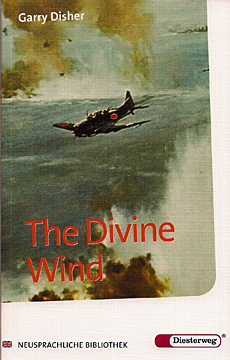5. Cultural-historical
Setting
of the novel
The setting is Broome, a town in Western Australia, shortly before and during the early years of the Second World War. At that time Broome is a typical Australian frontier town with flimsy, ramshackle buildings, "a straggling mile of wood and corrugated-iron shops and dwellings", its red dirt roads scribbling "through grey scrubland", and its ever present sea and white beaches. The scents of "saltwater tides and mock-orange blossom, incense and burning dung, cotton heated by the sun, spices in hot oil" determine the atmosphere of this town.
It is a melting pot of different classes and races. At a time, when White Australia Policy was in full force Broome was a town where "nobody much cared" where you came from or how you earned your living. Even class antagonism is unknown in this harmonious and peaceful coexistence of diverse ethnic groups and determines the life of Broome´s white population. However, latent racial discrimination and prejudices against Aborigines and Asians lie in wait just underneath the surface, which the war finally makes rise and which engender vague apprehensions.
With the attack on Pearl
Harbor and Australia´s declaration of war the hatred against enemy
aliens reaches its climax partly prepared by the media.
Already early in 1941 the "Truth" had written: "All enemy
aliens must be interned! Our stupid attitude of complacency and lenience
even hospitality has undoubtedly caused the loss of our ships in the
Pacific, death and wounds to our people, the destruction of valuable
cargoes ... It is not very long ago, that we had the strange scene enacted
when a shipload of enemy aliens arrived here from England. So dangerous
were these people that even England was afraid to have them in English
internment camps. Our treatment of the enemy aliens in our midst has
been a dreadful boomerang. Obviously they have been sending out messages
giving details of our shipping movements that have enabled the prowling
enemy raiders to pounce on our vessels and blow them to smithereens
without warning." (From: Truth, Melbourne, 5 January 1941)

Garry Disher, The Divine Wind
INFORMATIVE ITEMS
1.
Plot
2.
Selection Principle
3.
Author and Works
4.
Evaluation
5.
Cultural-historical Setting of the novel
During the war more than 7,000 Australian residents were interned, i.e. they were confined without any inquiry and lost their civil liberties. In 1941 Japanese families living in Australia were arrested and taken to camps around Australia, particularly to Tatura in Victoria. No exceptions were made, for even Australian-born children were included if one of their parents was Japanese. Though the Japanese women in Australia were not seen as a great danger they were interned, too.
Early in 1942 the consequences of anti-alien racism became more and more conspicuous in the form of simmering hatred.
Contact: info@new-english-readers.de
